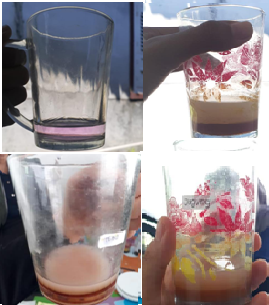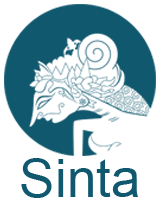
Penentuan Kualitas Minyak Goreng Bekas Setelah Penambahan Adsorben Alami dari Bonggol Jagung dan Ampas Tebu
Abstract
Continuous and repeated use of cooking oil at high temperatures accompanied by air and water contact can result in a hydrolysis reaction. The quality of the oil can be determined by carrying out the procedure for determining the free fatty acid content (FFA). Used cooking oil can be purified using an adsorbent/absorbent. Sugarcane bagasse and corn cobs have been widely used as adsorbents, but there has been no study comparing the increase in oil quality with these two adsorbents. This study aims to compare the color of the used cooking oil immersion with bagasse adsorbent and corncob charcoal adsorbent and determine the value of FFA levels of used cooking oil before and after soaking with bagasse adsorbent and corncob charcoal arsoben. The method used is fatty acid adsorption method and alkalimetric titration. From the observations, it was found that the color of the used cooking oil was fading after soaking with 3 types of adsorbents. The color of the immersion with a mixture of 1:1 adsorbent corncob charcoal and bagasse has the highest brightness level. FFA levels of used cooking oil after soaking also decreased from 0.207% to 0.141%; 0.132 %; and 0.094 %. The FFA content of used cooking oil by immersion in a 1:1 mixture of corn cob charcoal and bagasse was the lowest, which means the oil has the highest quality. It can be concluded that a mixture of 1:1 adsorbent of bagasse and corncob charcoal is the best adsorbent.
Keywords
Full Text:
PDFReferences
Hidayati, F. C., Masturi, & Yulianti, I. (2016). Purification of used cooking oil (Used) by using corn charcoal. JIPF (Journal of Physics Education), 1(2), 67–70.
Lemak, A., Minyak, B., & Bekas, G. (2014). Vol.3(1): 18-30. 3(1), 18–30.
Logam, A., Dengan, P. B., & Aktivator, B. (2013). 1 , 2 , 3 3. 2(3), 75–86.
Lubis, M. R. (2018). JURNAL ILMIAH KOHESI Vol. 2 No.4 Oktober 2018. Jurnal Ilmiah Kohesi, 2(4), 35–45.
Olivera, S., Muralidhara, H. B., Venkatesh, K., Guna, V. K., Gopalakrishna, K., & Kumar K., Y. (2016). Potential applications of cellulose and chitosan nanoparticles/composites in wastewater treatment: A review. Carbohydrate Polymers, 153, 600–618. https://doi.org/10.1016/j.carbpol.2016.08.017
Putri, V. D., & Dyna, F. (2019). Jurnal Katalisator. Standarisasi Ganyong (Canna Edulis Kerr) Sebagai Pangan Alternatif Pasien Diabetes Mellitus, 4(2), 111–118.
Sopianti, D. S., Herlina, H., & Saputra, H. T. (2017). Penetapan Kadar Asam Lemak Bebas Pada Minyak Goreng. Jurnal Katalisator, 2(2), 100. https://doi.org/10.22216/jk.v2i2.2408
Studi, P., Kimia, T., Teknik, F., & Mulawarman, U. (2016). JURNAL INTEGRASI PROSES Website : http://jurnal.untirta.ac.id/index.php/jip AMPAS TEBU UNTUK PEMBUATAN SABUN JL . Sambaliung No . 09 Samarinda Indonesia 749315. 6(1), 22–27.
Tebu, A., Bebas, A. L., & Bekas, M. G. (2016). JURNAL INTEGRASI PROSES Website : http://jurnal.untirta.ac.id/index.php/jip PROSES PEMURNIAN MINYAK JELANTAH MENGGUNAKAN AMPAS TEBU UNTUK PEMBUATAN SABUN PADAT 1 Program Studi Teknik Kimia , Fakultas Teknik , Universitas Mulawarman , Samarinda * Email : e. 6(2), 57–63.
Ulfindrayani, I. F., & A’yuni, Q. (2018). Penentuan Kadar Asam Lemak Bebas Dan Kadar Air Pada Minyak Goreng Yang Digunakan Oleh Pedagang Gorengan Di Jalan Manyar Sabrangan, Mulyorejo, Surabaya. Journal of Pharmacy and Science, 3(2), 17–22. https://doi.org/10.53342/pharmasci.v3i2.111
DOI: https://doi.org/10.31764/jafp.v1i2.6973
Refbacks
- There are currently no refbacks.
Copyright (c) 2021 The Authors
JAFP is indexing in the following databases:











